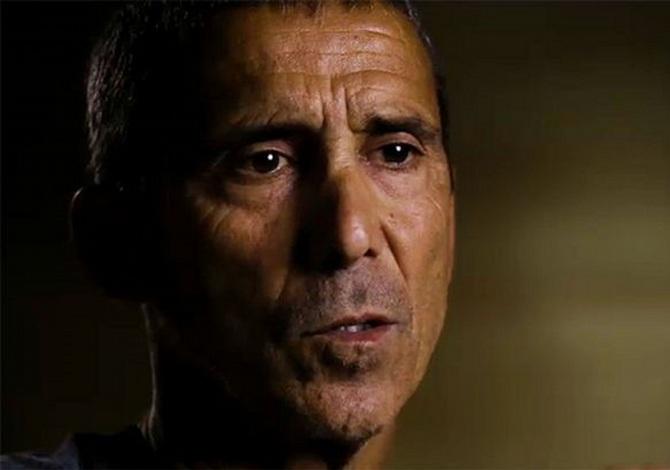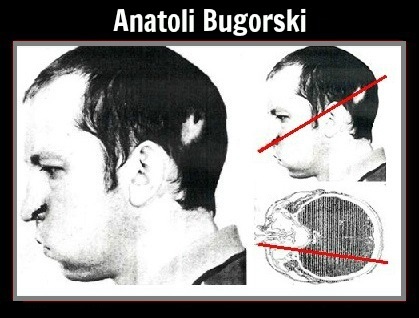Nathan’s Final Journey: A Brave Little Warrior’s Battle, His Mother’s Love, and the Peace That Finally Came.2062
Today, heaven gained a little warrior. Nathan’s long battle with cancer has come to its end, and his small heart, weary from years of illness and treatment, finally rests. For his family, the relief is mingled with heartbreak, for while his suffering has ceased, the absence of his presence leaves a silence that no words can fill.
From the earliest days of his diagnosis, Nathan faced more pain than any child should ever know. He endured procedures, hospital stays, and treatments that tested his body and spirit. Yet through every challenge, Nathan displayed a courage that was quiet yet extraordinary. His smiles, even on the most difficult days, radiated a bravery that inspired every adult around him. His laughter — sometimes faint, sometimes full-bodied — became a lifeline, a reminder that even in the presence of pain, joy can exist.
His mother, by his side through every step of his journey, learned the intimate language of care. She knew which touch soothed, which words calmed, and which moments could bring even a fleeting smile. She became his anchor in a world dominated by illness, translating fear into hope, despair into gentle reassurance. Together, they navigated the endless corridors of hospitals, the beeping machines, the clinical smells, and the quiet dread of uncertainty, always holding onto the possibility of a moment of peace, a moment of normalcy, a moment of love.

The final day came softly, almost peacefully. His mother held him close, her arms wrapped around his fragile body, her voice whispering words of comfort and love. The machines, which had been the soundtrack of so many long days and nights, went quiet. In that silence, there was not emptiness, but a profound presence of love — a recognition that his journey had ended in grace, not fear. In that moment, she understood that her boy was finally home, and that the pain which had defined so much of his life had dissolved into peace.
Nathan’s presence had never been defined solely by his illness. Even as the disease ravaged his body, he maintained a spark of joy and curiosity that refused to be extinguished. He teased, he played, he loved — and he taught everyone around him lessons in resilience and empathy. Every day, his small acts of kindness and moments of laughter illuminated the darkest hospital rooms. Nurses and doctors marveled at his determination, his ability to find light even amid the harsh fluorescent lights and clinical walls.

His mother remembers vividly the moments of joy — the way he would giggle at a funny joke, the way he would insist on sharing his small treasures with friends and siblings, the way he would smile even when pain pricked sharply through his tiny body. These memories, though bittersweet, are treasures. They are proof that even in the presence of immense suffering, love, laughter, and joy can flourish.
Nathan’s courage was not loud or boastful. It was quiet, resilient, and unwavering. It existed in the way he faced each day, each treatment, each needle, and each hospital stay. It existed in his willingness to trust the adults around him, in his ability to find joy in moments when it would have been easier to surrender. And in that courage, his family found their own strength, learning to persevere through exhaustion, grief, and fear, inspired by the bravery of a little boy who never gave up.
Now, Nathan’s spirit has transcended the confines of hospitals, treatments, and illness. His laughter lives on in the hearts of those who loved him, his joy imprinted on every memory, and his courage woven into the fabric of every life he touched. His mother pictures him running again, free and unburdened, his laughter rising through skies that no illness can reach. In her imagination, he is untethered from pain, soaring through endless fields, a child fully alive and fully free.

Though his body is gone, his presence is eternal. Every smile he shared, every playful glance, every tender moment of connection remains as a guiding light for his family. They carry him forward in memory, in stories, in the lessons he imparted about the power of love, the necessity of hope, and the enduring strength of the human spirit. Nathan’s life may have been brief, but it was profound, leaving an indelible mark on the hearts of all who knew him.
For his mother, the grief is immense, yet mingled with gratitude. She grieves for the moments that will never be, the milestones he will never reach, the laughter that will no longer fill the rooms of her home. But she is also grateful — for every day she had with him, for every lesson in courage and love, for the chance to witness the extraordinary strength of a child whose spirit refused to be diminished by illness.
Nathan’s story is a reminder that life, even when tragically short, can be meaningful beyond measure. It teaches us that courage is not the absence of fear or pain, but the determination to embrace life fully even in its most challenging forms. It reminds us that love endures beyond the body, that joy can persist in memory, and that the spirit of a child can continue to inspire long after they have left this world.
Though Nathan has left this earth, he remains a warrior. His battle may have ended, but his legacy is eternal. It lives in the stories his mother tells, in the laughter she remembers, in the courage he inspired in everyone who encountered him. Every whispered memory, every quiet reflection, is a testament to a life lived with bravery, generosity, and love.
The end of Nathan’s battle does not signify the end of his impact. His spirit continues to guide, comfort, and inspire. His mother sees him in the gentle moments of everyday life — a laugh, a kind gesture, a memory that brings a smile through tears. He teaches that even when life is brief, the depth of love and joy one can give is immeasurable.
Nathan’s journey reminds us all to cherish every moment, to find courage in adversity, and to recognize that even in suffering, the human spirit can shine with extraordinary brilliance. He was a little warrior in the truest sense, and though he has been freed from pain, his light remains — fierce, joyful, and eternal.
Rest easy, sweet Nathan. Your suffering is over. Your spirit is free. And though you may no longer walk beside us, you will always run through our hearts, our memories, and the skies of our imagination. Your laughter, your love, and your courage endure, a reminder that even the smallest warriors can leave the greatest impact.
The Man Who Survived a Proton Beam Through His Brain — Anatoli Bugorski’s Astonishing Story

In 1978, Soviet physicist Anatoli Bugorski walked into the U-70 synchrotron laboratory, expecting an ordinary day of experiments. He was meticulous, careful, and deeply immersed in the work he loved — particle physics. But what happened that day would defy all laws of biology, physics, and common sense.
While inspecting a malfunctioning component of the massive particle accelerator, a safety mechanism failed. In an instant, a proton beam — traveling near the speed of light — shot straight through his head. The flash was so intense that Bugorski later described it as “brighter than a thousand suns.” Remarkably, at that very moment, he felt no pain. Instead, there was only a blinding brilliance, overwhelming his vision, and a sense of being struck by something beyond comprehension.
By the next day, reality set in. Half of his face began to swell, and he realized something irreversible had happened. The beam had burned a path through his brain, leaving devastating consequences: he was blind in one eye, deaf in one ear, and partially paralyzed. Yet the left side of his face remained smooth and wrinkle-free — frozen, as if time itself had paused on that half of his body. Doctors estimated that he had absorbed between 200,000 and 300,000 rads of radiation — thousands of times the lethal dose for an ordinary human.

By every rule of biology, physics, and medicine, Anatoli Bugorski should have died instantly. And yet, he survived.
Due to the secrecy surrounding Soviet scientific projects, the world would not learn of Bugorski’s accident for many years. He quietly returned to work, continuing his research, lectures, and experiments. Colleagues noticed the physical changes — the partial paralysis, the frozen side of his face — but they could not comprehend how he had survived such an incident. Predictions of imminent death, severe neurological decline, or permanent incapacitation were all proven wrong. Bugorski defied every expectation, continuing his life and work in ways that astonished both scientists and doctors.

The human brain is incredibly resilient, and Bugorski’s story became a testament to that resilience. The path of the proton beam had destroyed tissue along its trajectory, yet large portions of his brain adapted. Motor functions, memory, and cognition remained functional. Though he lived with partial disabilities, he continued contributing to physics, demonstrating a level of determination and adaptability that many would consider impossible.
Bugorski’s life after the accident was quiet but extraordinary. There were no public celebrations, no grand ceremonies — only a man who had faced death in the most incomprehensible way and chosen life. He returned to his passion, continuing to explore the subatomic world, and he did so with a unique perspective, understanding both the fragility and the miraculous potential of the human body.

His survival challenges what we know about life and death. It reminds us that even under circumstances that should be fatal, the human body and spirit can endure. Anatoli Bugorski literally took a particle beam — a destructive force capable of vaporizing tissue — through his brain, yet lived to tell the tale, to reflect, and to contribute further to science.
This story is not only about survival; it is about courage, adaptability, and the unpredictable nature of life. It is a reminder that science does not always explain everything, that the human spirit can transcend limitations, and that resilience can manifest in ways that defy imagination. Anatoli Bugorski stands as a living testament to the fact that life can persist even when all signs indicate it should end.

Today, Anatoli Bugorski is remembered not just as a physicist, but as a symbol of human endurance. His life challenges our assumptions about mortality and capability, illustrating that sometimes survival is not just a matter of biology but of determination, chance, and the profound adaptability of the mind and body.
In the annals of scientific history, the tale of Bugorski is one of the most extraordinary. A man who literally had a particle beam pass through his brain and lived, who returned to work and continued contributing to physics — it is a story that blends science, courage, and the miraculous resilience of life itself.

Anatoli Bugorski’s story shows us that human beings are capable of more than we often believe. Even when struck by forces beyond comprehension, even when the world seems impossible, the spirit can endure, adapt, and continue. In his life, we see a powerful message: survival is sometimes a quiet miracle, and life, no matter how fragile, can persist against all odds.





